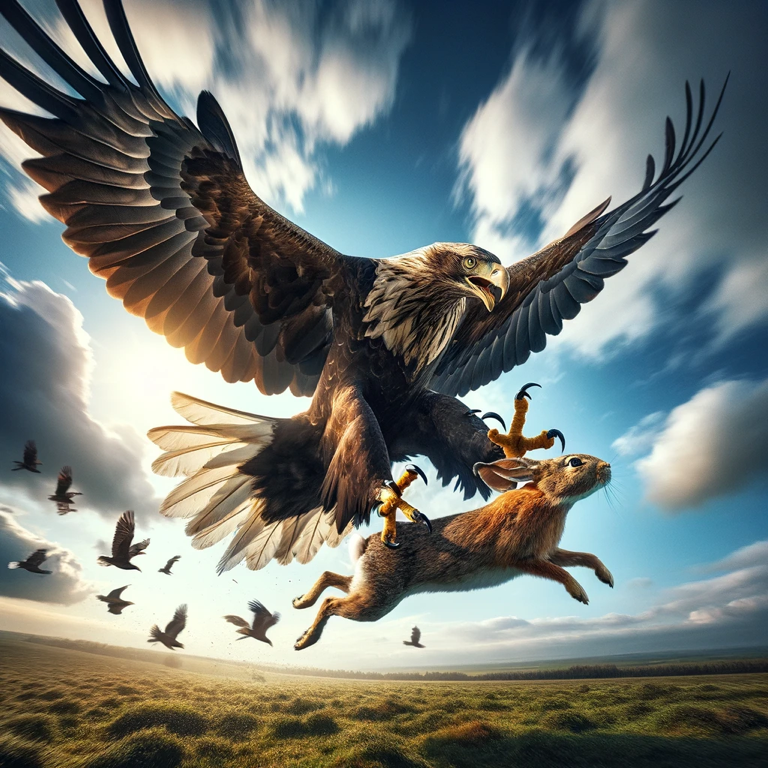Eagles, with their majestic presence and powerful symbolism, have long captured the imagination of humans around the world. Known for their strength, keen vision, and soaring flight, these birds of prey have come to embody freedom, power, and transcendence. In the United States, the eagle holds a special place as the national bird, a symbol of the nation's ideals and aspirations. But how did this magnificent bird come to represent the United States? Let’s explore the journey of the eagle to its esteemed status.
The Eagle in Mythology and Culture
Before delving into the specific journey of the eagle in the United States, it’s important to recognize the broader cultural and mythological significance of this bird. Across various civilizations, eagles have been revered as divine messengers, warriors, and emblems of authority.
In ancient Greece, the eagle was associated with Zeus, the king of the gods, symbolizing strength and leadership. Native American cultures have long regarded the eagle as a sacred creature, a link between humanity and the divine, embodying the spirit of freedom and courage.
The Birth of a Nation and the Search for Symbols
As the thirteen American colonies fought for their independence from British rule, the fledgling nation needed symbols to represent its values and identity. In 1776, when the Declaration of Independence was signed, the Founding Fathers recognized the importance of establishing a powerful national emblem.
Benjamin Franklin, Thomas Jefferson, and John Adams were tasked with designing a national seal. Their initial design featured a complex tableau, including elements like the Biblical story of Moses and the pillars of Hercules. However, these ideas did not resonate with the vision of a unified American identity.
The Bald Eagle Takes Flight
The turning point came in 1782 when Charles Thomson, Secretary of the Continental Congress, proposed the bald eagle as the central figure of the Great Seal of the United States. The bald eagle, native to North America, was seen as a fitting symbol of the new nation’s independence and strength.
Thomson’s design depicted the eagle with outstretched wings, clutching an olive branch in one talon and a bundle of arrows in the other. The olive branch symbolized peace, while the arrows represented the readiness to defend the nation's sovereignty. Above the eagle's head appeared a cluster of thirteen stars, representing the original colonies.
Symbolism and Controversy
The selection of the bald eagle was not without controversy. Benjamin Franklin famously preferred the turkey, considering it a more respectable bird and a true native of America. He criticized the bald eagle as a bird of “bad moral character” due to its scavenging habits. However, Franklin’s objections did not gain enough support to change the decision.
The bald eagle’s powerful imagery prevailed, symbolizing the balance between peace and strength. The Great Seal, featuring the eagle, was officially adopted on June 20, 1782, and has since appeared on important documents, currency, and government buildings, embodying the spirit of the nation.
The Bald Eagle Today
Today, the bald eagle continues to be a potent symbol of the United States. Despite facing near-extinction in the 20th century due to habitat destruction and the effects of the pesticide DDT, the bald eagle has made a remarkable recovery, thanks to concerted conservation efforts. It was removed from the Endangered Species list in 2007, a testament to the resilience and enduring significance of this iconic bird.
Conclusion
The journey of the bald eagle from a revered creature in myth and culture to the national bird of the United States is a story of symbolism and national identity. Representing freedom, strength, and resilience, the bald eagle stands as a proud emblem of the nation's values and aspirations. As we look to the skies and see the majestic eagle soaring, we are reminded of the enduring spirit and ideals that continue to shape the United States.





No comments:
Post a Comment